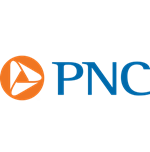NFTs went on a frenzy in 2021, with sales reaching $25 billion, prompting a Dallas software developer to use the cash grab to clear millions of debts for low-income families.
“People were making stupid amounts of money in space,” said Joshua Lapidus, whose day job is at Opolis, a Denver-based tech company that helps manage health benefits and payroll for the self-employed.
The medical debt project took shape last fall as many do in the crypto space — through a panel discussion, which Lapidus started with blockchain experts he knew. They landed on a unique theme for their non-fungible tokens – toilet paper – to poke fun at how people would buy anything if it was an NFT. About 70% of the funds would go to charity.
“We were making jokes about the gravity of the landscape, people selling anything to make money,” Lapidus said. “And we thought we should ask people to buy our stuff and donate it to charity.”
The project dubbed Rainbow Rolls launched in October with 10,000 NFTs of toilet paper for sale. The limit was later lowered to 1,000 rolls, however many additional rolls are sold the week after reaching the 1,000th roll sold. So far, around 855 reels have been bought by word of mouth, with their price varying according to the price of Ethereum.
Rainbow Rolls donated 20% of its sales, or $91,000, to New York-based RIP Medical Debt, which then used it to erase more than $7 million in medical debt by buying debt in bundled wallets. On average, every dollar donated to the nonprofit cancels $100 in medical debt, according to its website.
The project has also donated 16.5% of funds to Gitcoin, which helps fund community projects in the blockchain-focused Web 3 space, and an additional 16.5% to Giveth, which funds welfare projects. social.
“People buying rolls didn’t care about the art itself,” said Michael Lewellen of Rainbow Rolls, protocol security advisor at Walnut, Calif.-based OpenZeppelin, which is an open-source library for the development of smart contracts.
“It was about having a meaningful impact on someone’s life — the same reason you contribute to charity,” Lewellen said.
RIP Medical Debt, founded in 2014 by two former debt collection executives, uses data analytics to target assistance to households whose income is less than twice the federal poverty level or whose medical debt is at least 5% of gross income.
Low-income families often cannot pay their medical debt, so hospitals and debt collectors are eager to sell that debt for pennies on the dollar to RIP Medical Debt.
Rainbow Rolls’ donation was significant, considering the average donation to RIP Medical Debt is less than $300, said Scott Patton, director of development at RIP Medical Debt.
“I think it struck a chord with people, because if you get a serious illness, it harms not only your physical body, but also your financial being,” Patton said. “Everyone in America is aware that even with insurance and a good life, you can be a bit isolated but you’re still vulnerable.”
RIP Medical Debt is also proposing to review hospitals’ charitable care policies to help them prevent the creation of new debt.
The team behind Rainbow Rolls are happy with their success, although they are no closer to their original goal of selling 10,000 rolls. Lapidus said when the effort launched in October, it was slightly past the fever pitch. The NFT community also appreciates knowing the identity of the artist, which Rainbow Rolls has kept anonymous, he said.
The group plans to launch a second project and plans to register as a nonprofit, Lapidus said. The timing will depend on when everyone is available, but he estimates a launch around April.
Most of the money will continue to go to charity, Lapidus said. The group plans to partner again with RIP Medical Debt and possibly new charities.
“The people helping out with this are very well paid, very successful contributors, so there’s no way I lured them into this for the money,” Lapidus said. “If we wanted to, there is a very simple formula for making $10 million overnight. They did it to help people.

/cloudfront-us-east-1.images.arcpublishing.com/pmn/P2ABLHIBUBBBZGEENY2ZNLFGB4.jpg)

